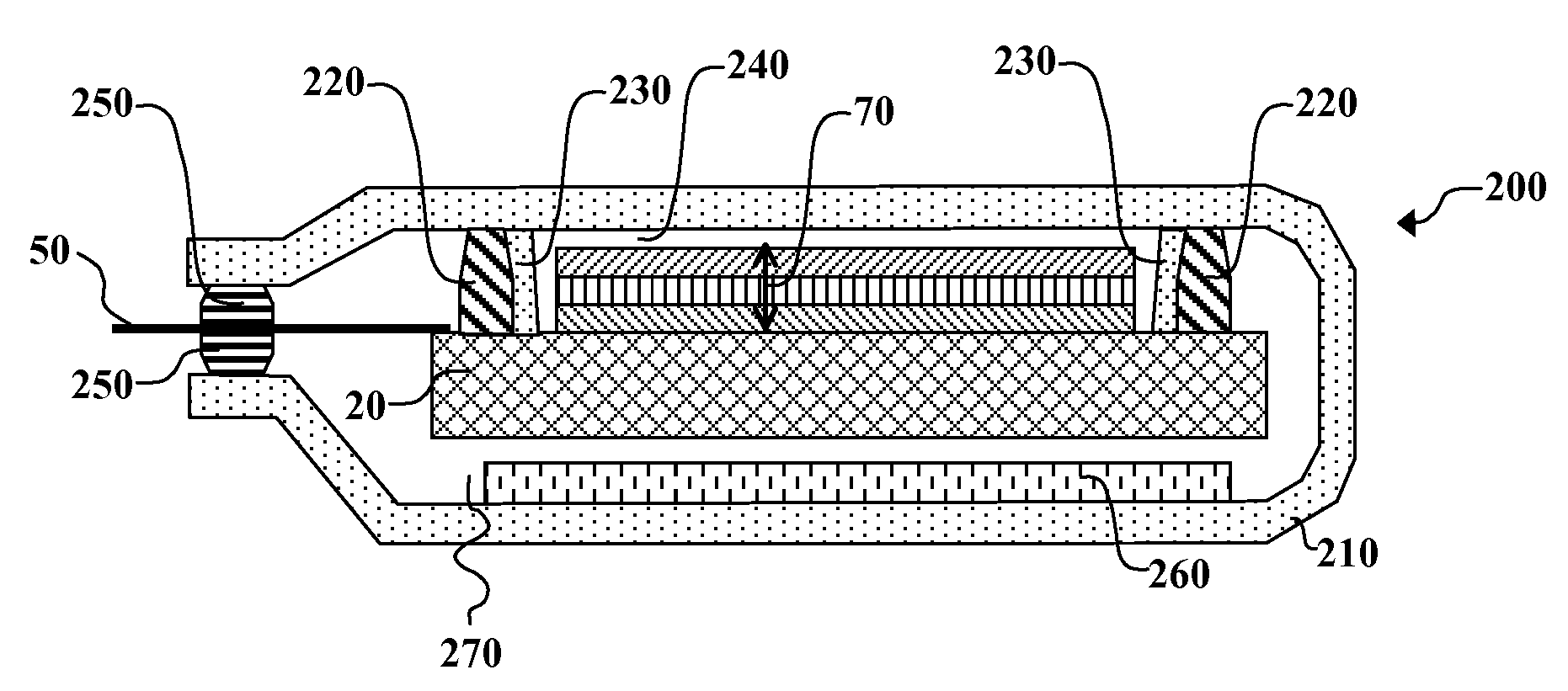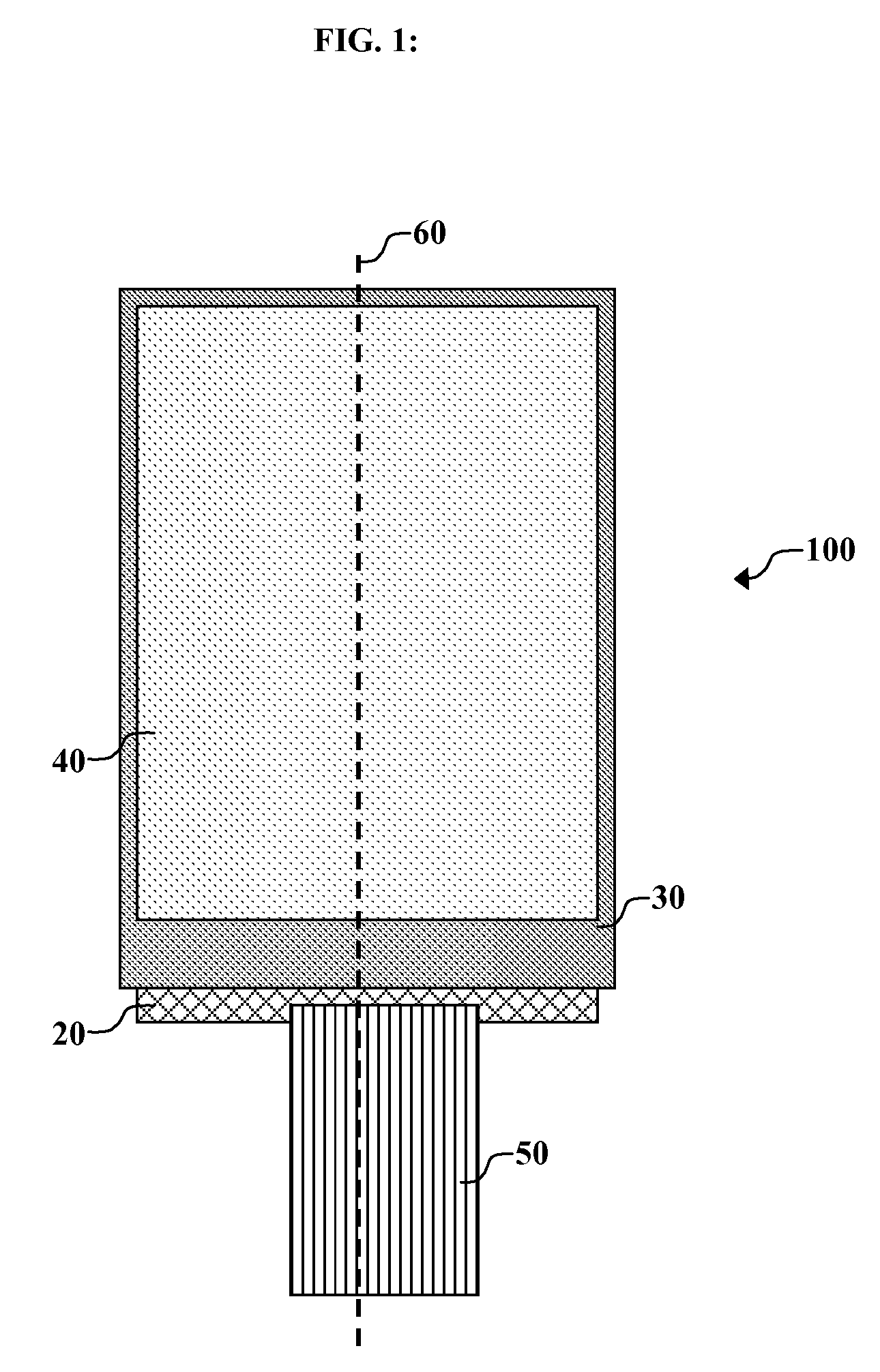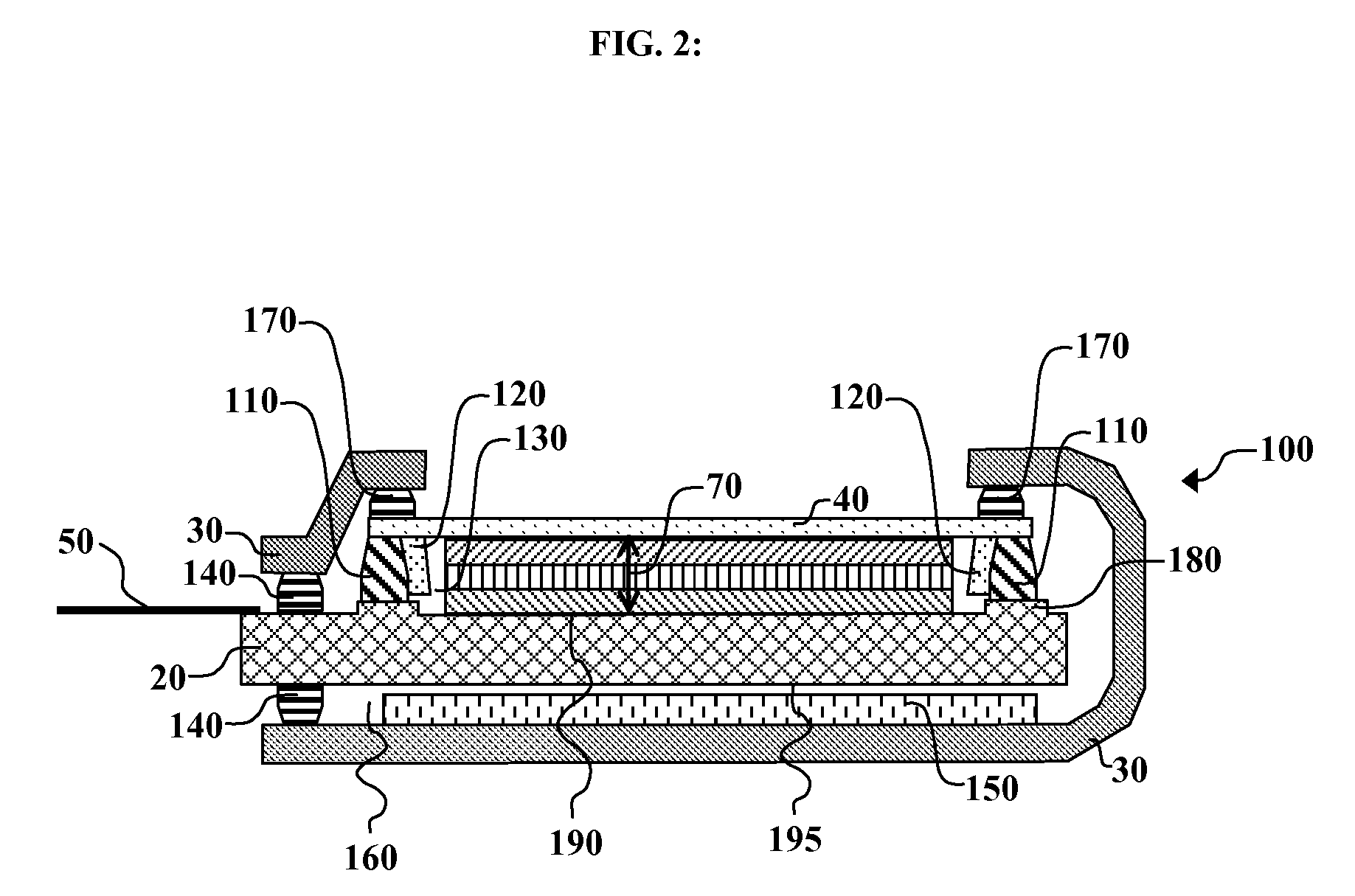Desiccant sealing arrangement for OLED devices
a technology of sealing arrangement and oled device, which is applied in the manufacture of electrode systems, semiconductor devices, electric discharge tubes/lamps, etc., can solve the problems of low level achievable, low moisture capacity of molecular sieve materials, and inability to so as to improve the ease of manufacture, reduce the moisture level inside oled devices, and reduce the cost
- Summary
- Abstract
- Description
- Claims
- Application Information
AI Technical Summary
Benefits of technology
Problems solved by technology
Method used
Image
Examples
Embodiment Construction
[0030]The term “OLED device” or “organic light-emitting display” is used in its art-recognized meaning of a display device comprising organic light-emitting diodes as pixels. The term “top-emitting” refers to display devices in which light is primarily not emitted through the substrate upon which they are based but opposite to the substrate, and are viewed through the side opposite to the substrate. The term “highly moisture-sensitive electronic device” is employed to designate any electronic device that is susceptible to a measurable degradation of device performance at ambient moisture levels greater than 1000 ppm. The term “substrate” is employed to designate organic, inorganic, or combination organic and inorganic solids on which one or more highly moisture-sensitive electronic devices are fabricated. The term “sealing material” is employed to designate organic, inorganic, or combination organic and inorganic materials used to bond encapsulation enclosures to substrates and to p...
PUM
 Login to View More
Login to View More Abstract
Description
Claims
Application Information
 Login to View More
Login to View More - R&D
- Intellectual Property
- Life Sciences
- Materials
- Tech Scout
- Unparalleled Data Quality
- Higher Quality Content
- 60% Fewer Hallucinations
Browse by: Latest US Patents, China's latest patents, Technical Efficacy Thesaurus, Application Domain, Technology Topic, Popular Technical Reports.
© 2025 PatSnap. All rights reserved.Legal|Privacy policy|Modern Slavery Act Transparency Statement|Sitemap|About US| Contact US: help@patsnap.com



